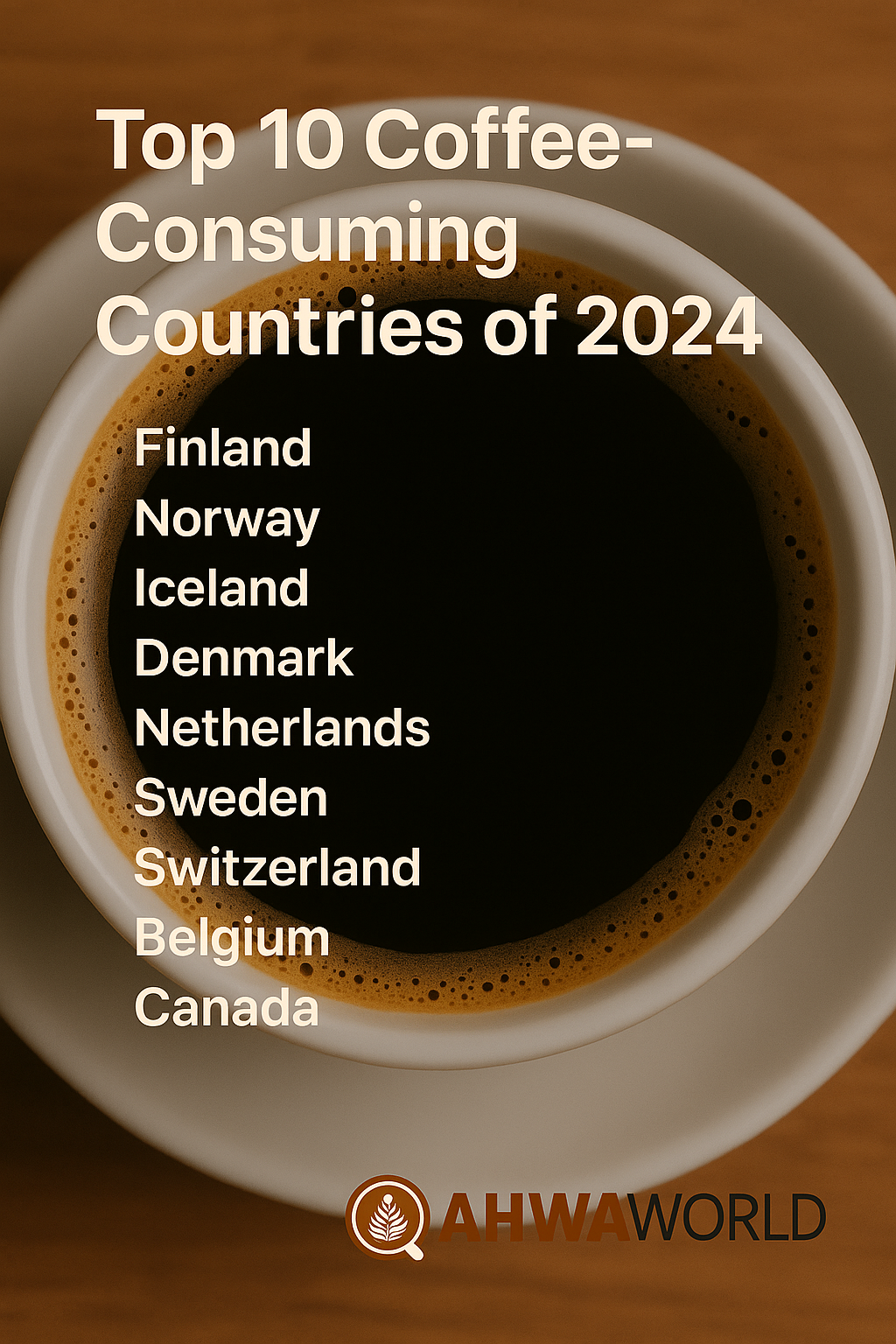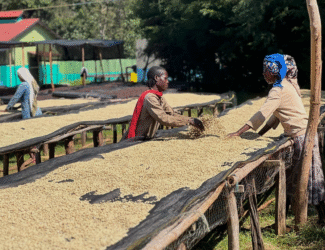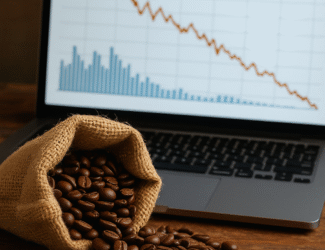
The Top 10 Coffee-Consuming Countries of 2024
Per capita data confirms Nordic dominance, while the U.S. leads the world in total volume consumed
Dubai, July 2025 (Qahwa World) – Verified data from multiple reputable sources reveals that global coffee consumption continues to rise, with the world’s top coffee-consuming nations showcasing both cultural traditions and modern lifestyle shifts. While countries like the United States lead in total volume, European nations—particularly in the Nordics—continue to top the charts when it comes to per capita consumption.
This overview presents the latest available rankings based on daily consumption habits and national volume, providing a reliable reflection of which countries truly live and breathe coffee. Though comprehensive 2024 totals by volume remain proprietary, this report draws from publicly accessible consumption data and global market research to highlight the nations where coffee is more than just a beverage—it’s a way of life.
Luxembourg – 5.31 cups per person per day
Luxembourg leads the world in daily coffee consumption per capita, with an average of 5.31 cups per person per day. Though its population is small, high purchasing power, a strong café culture, and cross-border consumer behavior contribute to its exceptional ranking.
Luxembourg’s consumption is heavily driven by a mix of home brewing, Nespresso-style systems, and premium café visits, placing it at the top of per-person usage globally.
Finland – 3.77 cups per person per day
Finland remains the world’s highest coffee consumer among Nordic countries, with an average of 3.77 cups per day. Filter coffee dominates, often enjoyed with pastries during traditional “fika” breaks.
Despite its colder climate and high costs of living, coffee in Finland is an everyday essential—driven by community routines, workplace norms, and strong preference for light roasted Arabica beans.
Sweden – 2.59 cups per person per day
Sweden retains its place in the top three, with 2.59 cups per day per person. Coffee is central to Swedish life, especially during “fika” (coffee and cake breaks) that are deeply ingrained in national culture.
While filtered coffee remains widespread, there is increasing interest in specialty brews and single-origin offerings, particularly in cities like Stockholm and Gothenburg.
Norway – 2.57 cups per person per day
Norwegians consumed an average of 2.57 cups daily in 2024. The country’s long-standing love of coffee dates back centuries, with black coffee and pour-over methods remaining common.
Despite high prices, consumption remains strong due to the cultural and social role coffee plays. Norwegian roasters have also gained recognition for their commitment to transparency and ethical sourcing.
Denmark – 2.04 cups per person per day
In Denmark, daily coffee intake averaged 2.04 cups per person, cementing the country’s place in the top five. Filter coffee is still a staple, but espresso-based drinks are now common across Copenhagen and other cities.
The rise of independent cafés and Denmark’s emphasis on hygge—coziness and comfort—help keep coffee at the heart of Danish life.
Austria – 2.03 cups per person per day
With 2.03 cups per day, Austria is one of Central Europe’s biggest coffee lovers. Coffeehouses have long been part of Viennese identity, blending intellectual history with specialty traditions.
The consumption trend includes a mix of traditional Melange-style drinks and a growing demand for traceable, high-quality beans.
Switzerland – 1.87 cups per person per day
Swiss coffee drinkers consumed 1.87 cups per day, with consumption influenced by both Italian espresso culture and French café traditions.
The country’s affluence supports high-end capsule machines and artisan roasting, with sustainability and origin also playing a key role in purchasing habits.
Netherlands – 1.79 cups per person per day
Coffee intake in the Netherlands reached 1.79 cups per day in 2024. Dutch consumers value convenience—many drink coffee at work, on the go, or at home using drip and pod machines.
Amsterdam’s café scene is also driving interest in fair trade and direct-trade coffees, with emphasis on balanced, mild roasts.
Germany – 1.61 cups per person per day
Germany remains Europe’s largest market in total volume but ranks ninth in per capita intake, with 1.61 cups per person per day. Filter coffee is still dominant, though espresso and capsule-based systems are rising in popularity.
Germany’s interest in organic and certified coffees has grown, reflecting broader consumer interest in ethical sourcing.
Canada – 1.57 cups per person per day
Canadians averaged 1.57 cups per day, combining traditional drip coffee culture with an expanding specialty scene. The cold climate and convenience-driven habits—especially in drive-thru chains—sustain strong national demand.
Specialty coffee continues to grow in major cities, while consumers show increasing interest in local roasting and sustainable packaging.
Coffee Consumption by Total National Volume (2023 data)
Although official 2024 bag counts per country have not yet been released, verified 2023 figures from ReportLinker and national sources confirm:
-
United States – 28.4 million 60-kg bags
-
Brazil – 24.1 million bags
-
Japan – 8.1 million bags
-
Germany – ~8.7 million bags
-
Indonesia – 5.4 million bags
-
Italy – ~5.5 million bags
-
Russia – ~4.7 million bags
-
Ethiopia – ~4.1 million bags
-
Philippines – ~3.9 million bags
-
Canada – ~3.5 million bags
Outlook
While Nordic countries maintain their status as the world’s most coffee-obsessed per capita, the global landscape of consumption is shifting. Emerging markets like the Philippines, Ethiopia, and Indonesia are seeing increased domestic demand, while traditional giants like the U.S. and Brazil continue to lead in absolute volume.
Exact 2024 consumption figures in standardized units are not yet publicly available, and may vary once final ICO and national reports are released. However, cultural consumption patterns, consumer behavior, and available volume data give us a reliable snapshot of where coffee holds its strongest roots.
As the coffee year 2024/25 continues, shifts in global preferences, economic trends, and climate-driven production changes are likely to influence both how much and how often the world drinks its favorite beverage.



